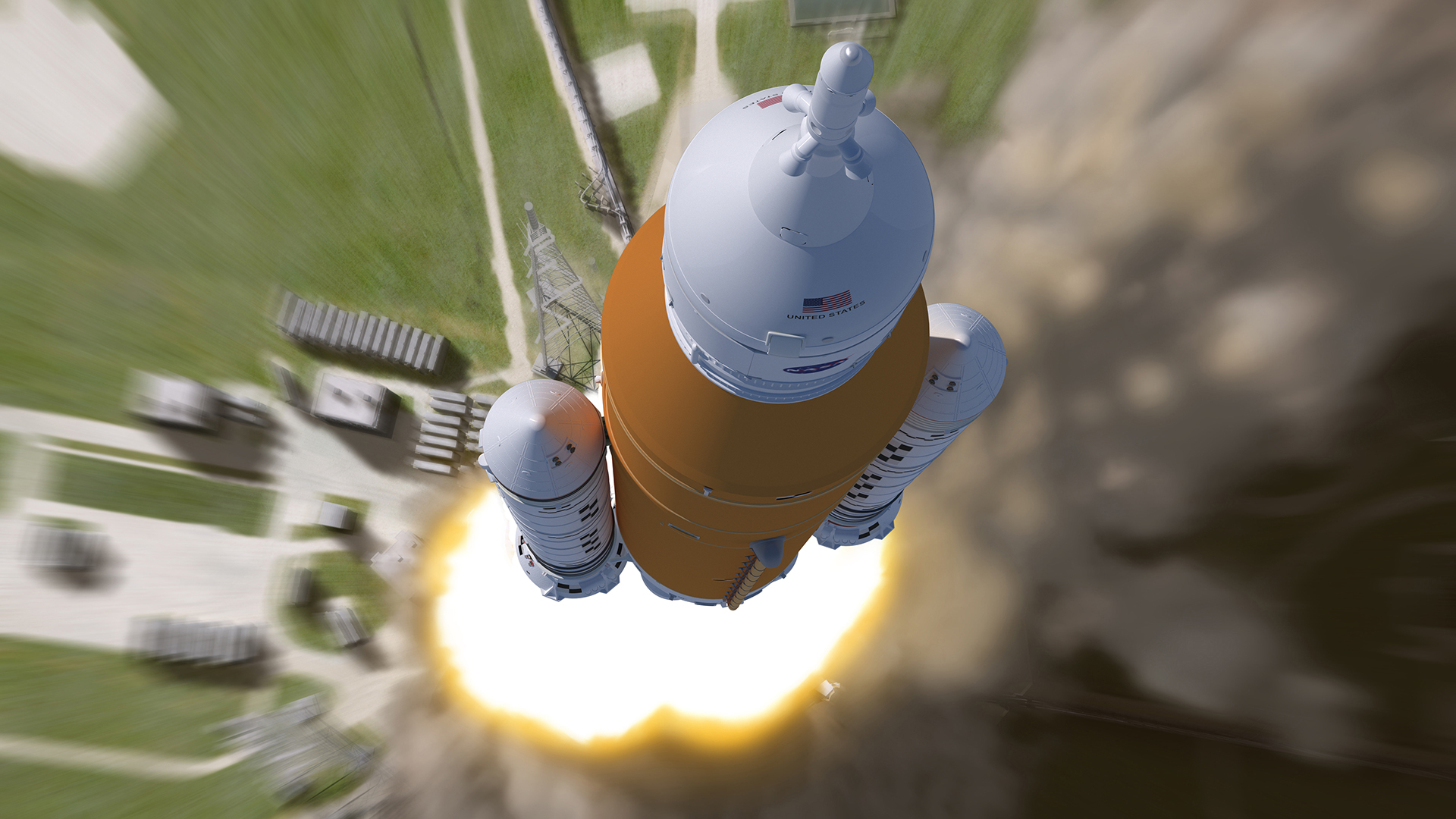NASA suddenly aborts moon rocket test launch with 29 seconds on the clock
A liquid hydrogen leak within the rocket may be to blame.

NASA abruptly aborted a rehearsal launch for its massive "Mega Moon rocket," which will one day return humans to the moon's surface, 20 seconds ahead of schedule on Monday (June 21), with just 29 seconds left on the countdown clock. Agency officials cited a liquid hydrogen leak within the rocket as the primary reason for the rehearsal's abrupt ending.
This is the fourth consecutive aborted attempt to complete a rehearsal launch of the mighty rocket — officially called the Space Launch System (SLS) — according to The Verge. However, even with the last-minute leak putting a damper on things, engineers completed more of their launch objectives than ever before, successfully fueling the deep-space rocket for the first time.
"I would say that the majority of our objectives were met," Charlie Blackwell-Thompson, the launch director for NASA's Artemis mission, which aims to bring the first woman and person of color to the moon and establish a permanent base there, said in a news briefing after the test. "There were maybe small pieces within that one primary objective that we came up a little short on."
The SLS is NASA's most powerful rocket ever built, Live Science previously reported. When capped by the crew vehicle that will carry the rocket's first human passengers, the SLS will stand 322 feet (98 meters) tall — higher than the Statue of Liberty — and weigh 5.75 million pounds (2.6 million kilograms), according to NASA.
This is slightly shorter than the agency's Saturn V rocket, used during the Apollo missions of the 1960s and 70s, but what SLS lacks in size it more than makes up for in power. SLS will be capable of delivering 8.8 million pounds (4 million kg). of thrust, 15% more than the Saturn V's 7.5 million pounds (3.4 million kg) of thrust, according to the Houston space center. As such, SLS will be able to haul more than 30 tons (27,000 kg) of cargo to the moon, which will eventually include materials to establish the first permanent base at the lunar south pole.
The "dress rehearsal" launch on Monday was meant to simulate the SLS's debut launch, which was previously scheduled for August 2022 at the earliest. Engineers intended to abort the launch with 9 seconds left on the countdown clock — the moment before the sequence begins to ignite the main engines at the rocket's base, according to The Verge.
While the flight crew was unable to complete a few of their launch objectives due to the hydrogen leak, their latest rehearsal was the most successful yet. Three prior rehearsals ended before the rocket was fully fueled, prompting the crew to temporarily remove the SLS from the launch pad to undergo repairs.
Sign up for the Live Science daily newsletter now
Get the world’s most fascinating discoveries delivered straight to your inbox.
Now, the SLS team has met about 90% of their pre-launch objectives, Artemis mission manager Mike Sarafin said during the briefing. Still, NASA has not said when the first real SLS flight — which will launch an empty crew capsule around the moon on a several-week trip — is scheduled to occur, or if this latest hiccup will set things back.
Originally published on Live Science.

Brandon is the space/physics editor at Live Science. His writing has appeared in The Washington Post, Reader's Digest, CBS.com, the Richard Dawkins Foundation website and other outlets. He holds a bachelor's degree in creative writing from the University of Arizona, with minors in journalism and media arts. He enjoys writing most about space, geoscience and the mysteries of the universe.









